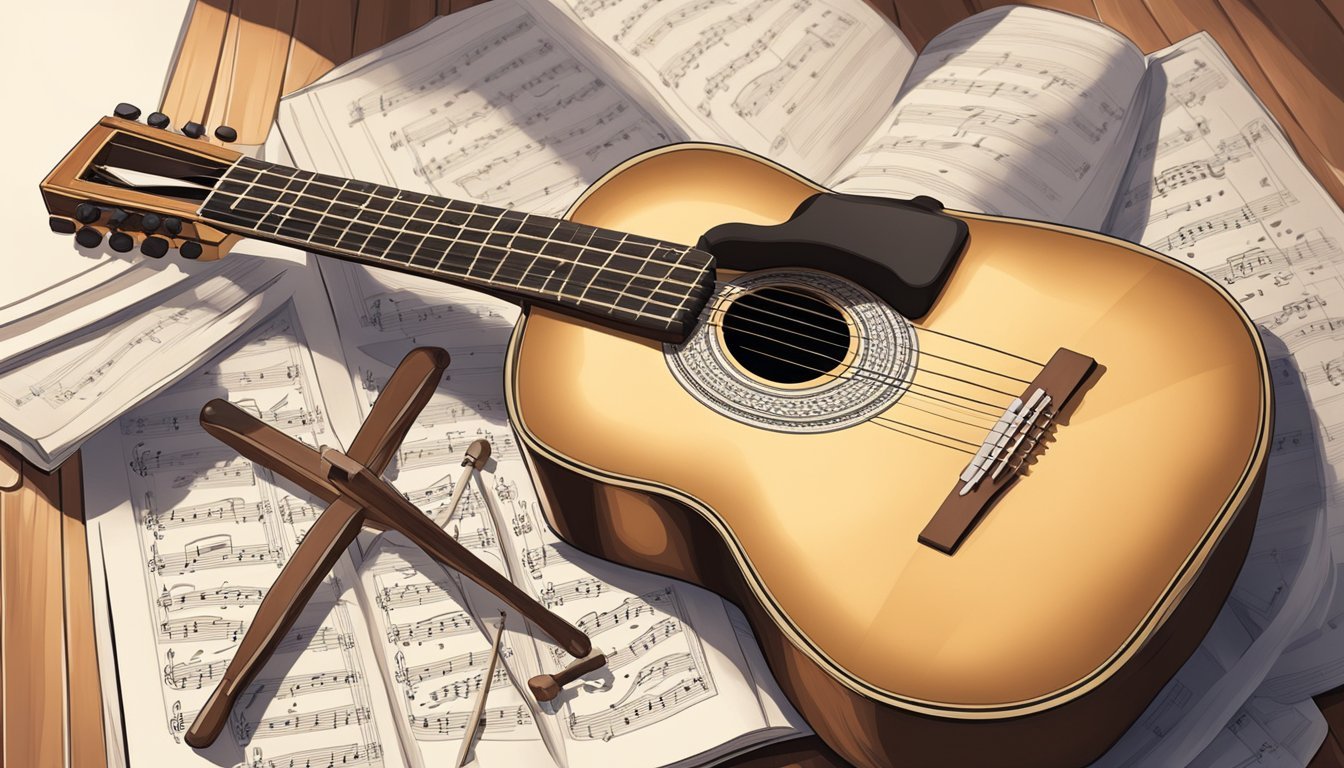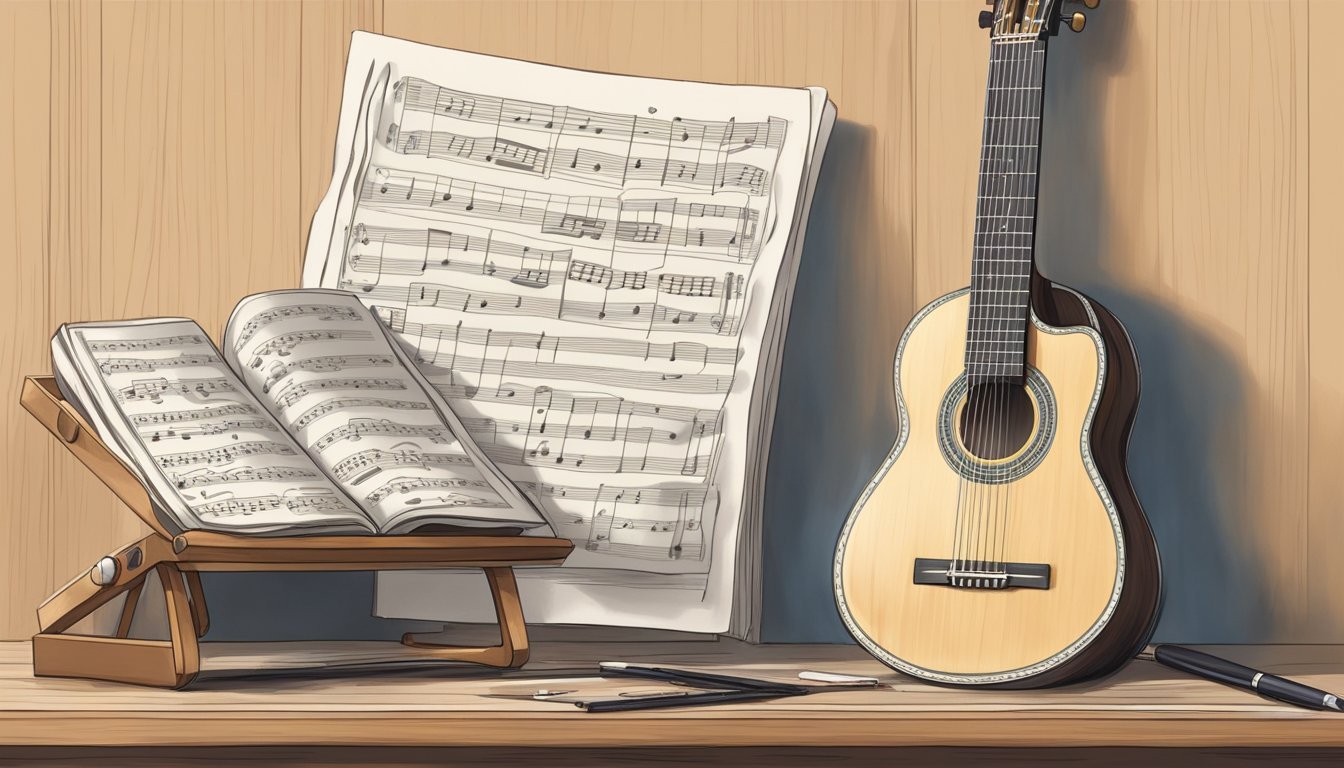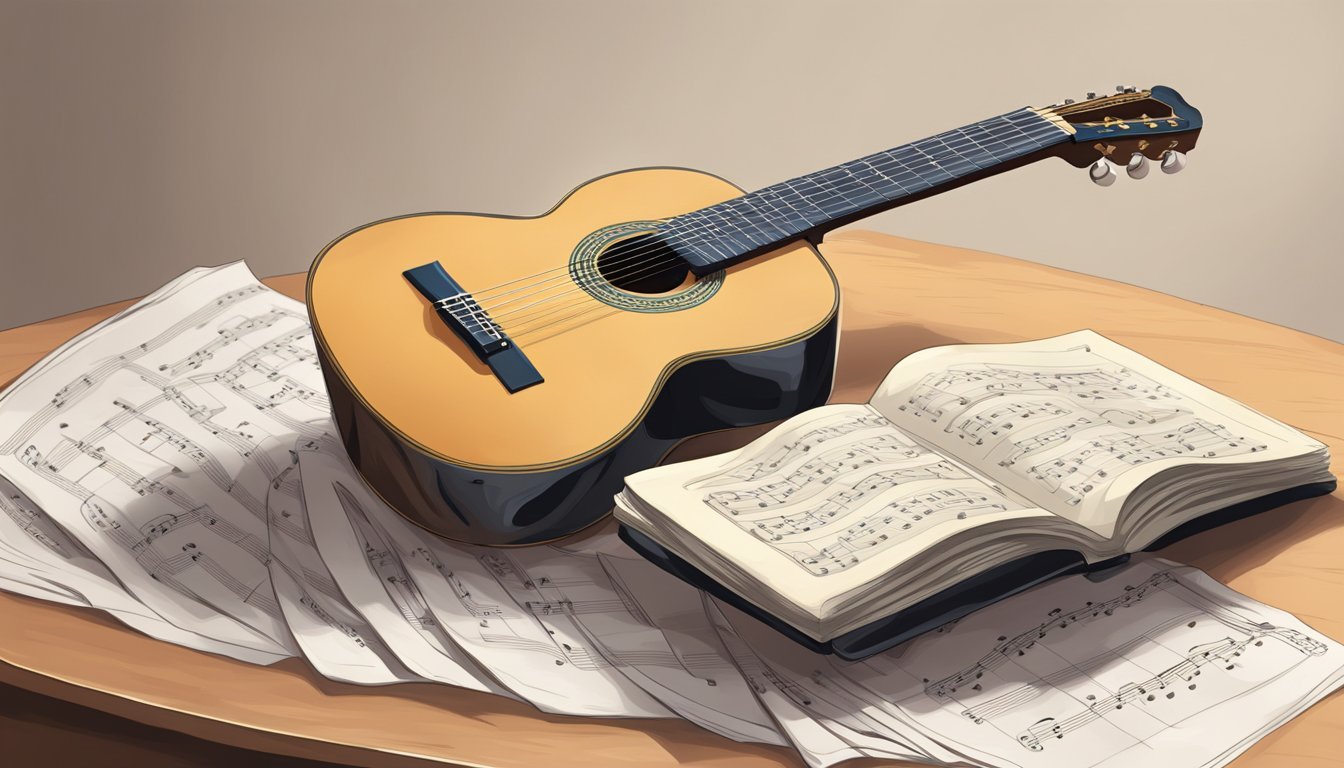Playing classical guitar can be a rewarding experience for anyone looking to express themselves through music.
To get started, you need to familiarize yourself with the instrument, understand basic techniques, and practice regularly.
Whether you are a complete beginner or someone shifting from another style, mastering the classical guitar can open doors to beautiful melodies and intricate pieces.

As you learn, you will develop skills that not only improve your playing but also boost your confidence in music.
Different techniques like fingerpicking and chord changes are essential.
With dedication, you can progress to playing your favorite classical pieces.
The journey might seem daunting at first, but with consistent practice, you’ll soon find joy in creating music.
Embrace the challenge and remember that every musician started somewhere.
Taking the first step in learning classical guitar can set you on a path of musical discovery that is both fulfilling and fun.
As you journey through this new musical adventure, consider exploring various genres to expand your skills and creativity.
Moreover, if you’re feeling adventurous, you might want to learn jazz guitar basics, which can add a whole new dimension to your playing.
Each style has its unique nuances that will challenge you and help you grow as a musician.
Key Takeaways
- Start by getting to know your classical guitar and its parts.
- Focus on basic techniques and practice regularly to build your skills.
- Progressively tackle more challenging pieces to enhance your repertoire.
Getting to Know Your Instrument
Understanding your classical guitar is crucial for getting started.
You’ll want to know its parts, the kind of strings it uses, and how to hold it comfortably.
Let’s explore these elements to help you play better.
Anatomy of a Classical Guitar
A classical guitar has several key parts that you should know.
The body is the large, hollow section that amplifies sound.
The neck is where you place your fingers to create different notes.
At the end of the neck, you’ll find the headstock, which holds the tuning pegs.
The bridge is where the strings are attached on the body, and the fingerboard is a flat piece on the neck where you press down the strings.
Knowing these parts helps you understand how playing works.
This can improve your technique and make it easier to communicate with teachers or fellow players.
Understanding Nylon Strings
Classical guitars typically use nylon strings, which differ from steel strings found on acoustic or electric guitars.
Nylon strings have a softer feel and produce a warm, mellow sound.
The treble strings are often made of nylon, while the bass strings are usually wrapped in silver wire.
This combination gives the guitar its unique tone.
These strings require less pressure to fret, which makes them easier on your fingers, especially for beginners.
You’ll want to change them regularly, as worn strings can sound dull and lifeless.
When you do, remember to stretch them gently after installation to help them stay in tune longer!
Holding Your Guitar: Footstool vs. Guitar Support
When it comes to holding your guitar, you have a couple of options: a footstool or guitar support.
A footstool raises your left foot, providing a good angle for your hands and making it easier to reach the neck.
This method is traditional and commonly used by classical guitarists.
Alternatively, a guitar support attaches to the guitar’s body.
This device keeps the guitar stable without needing to raise your foot.
It can be more comfortable for some, especially for longer practice sessions.
Both methods can help you find a relaxed posture, which is key to playing well.
Experiment to see which one feels best for you!
Fundamentals of Classical Guitar Technique
When starting with classical guitar, it’s essential to focus on both hands’ positions.
Proper technique can greatly improve your playing and sound.
Let’s explore how to develop your right hand position, master your left hand, and learn some basic chords.
Developing Right Hand Position and Tone
Your right hand plays a vital role in producing sound.
It should be relaxed and slightly curved.
Use your fingertips or fingernails to strike the strings, as this creates a clearer tone.
Make sure your thumb rests on the sixth string while your fingers are ready to pluck the rest.
Try using a mix of your index, middle, and ring fingers.
This helps in creating varied dynamics.
Start slowly, focusing on evenness in your strokes.
You want a smooth, flowing sound without harsh attacks.
Practicing simple exercises can guide you in fine-tuning your tone production.
Mastering Left Hand Position and Fretting
Your left hand needs to be flexible and precise for good fretting technique.
Start by positioning your fingers correctly on the fretboard.
Keep your thumb behind the neck and your fingers arched.
Each finger should press down on the string close to the fret, not in the middle.
This helps in producing a clear sound without buzzing.
Make sure to keep your fingers relaxed to avoid tension.
Practice moving between frets and changing fingers efficiently.
Watch out for finger placement as you progress.
This preparation helps in executing more complex pieces later.
Learning Basic Chords: E, A, and G
Starting with basic chords is key for any beginner.
The E, A, and G chords are foundational ones in classical guitar.
Here’s how to position your fingers:
-
E Chord: Your first finger goes on the first fret of the third string, the second finger on the second fret of the fifth string, and your third finger on the second fret of the fourth string.
-
A Chord: Use your first, second, and third fingers to press down on the second fret of the fourth, third, and second strings.
-
G Chord: Place your second finger on the third fret of the sixth string, and your first finger on the second fret of the fifth string.
Practice transitioning smoothly between these chords.
Familiarity with the fingerings will help you become more comfortable as you play.
Developing Your Musical Skills
Improving your classical guitar playing involves mastering music reading, understanding basic theory, and sticking to a daily practice routine.
These skills will help you become a more confident musician, allowing you to explore various pieces and techniques.
Reading Sheet Music and Tabs
Learning to read sheet music and tabs is crucial for any musician. Sheet music provides you with music notation that shows pitches and rhythms.
If you prefer a simpler approach, tabs offer a visual way to play your favorite songs.
To get started, focus on the staff which has five lines.
Each line and space represents a different note.
Begin by learning the notes on the fretboard.
Use beginner-friendly method books that include exercises for sight reading.
Practice a little each day.
Try to play pieces that challenge you just enough to improve without feeling overwhelmed.
Exploring Basic Music Theory
Music theory is like a roadmap for understanding how music works.
It explains how notes and chords fit together.
Start with the basic concepts like scales and chords.
A major scale consists of seven notes and forms the basis for many pieces.
You can practice arpeggios too, which are notes of a chord played one after the other.
These skills are essential for playing legato passages effectively.
Look for technique books that focus on theory.
Knowing the key signatures and time signatures will help when you encounter complex pieces.
Daily Practice Routine and Warmups
Creating a daily practice routine is key to your success.
Even short sessions can be effective if you practice regularly.
Aim for at least 20-30 minutes a day.
Start with a warm-up that includes scales and arpeggios.
This not only improves your technique but also warms up your fingers.
Consider including a variety of exercises: work on sight reading new pieces, and practice old ones to retain what you’ve learned.
Make sure to play at different volumes to build control.
Keeping a consistent routine will help you progress faster as you learn classical guitar.
Advancing Your Skills and Repertoire

To progress in your classical guitar journey, focus on exploring a variety of etudes and repertoire pieces.
Enhancing your musicality will help you bring emotion to your playing.
Finally, sharing your music through performance can boost your confidence and connect you with others.
Practicing Etudes and Repertoire Pieces
Practicing etudes is key for developing your technique.
These studies focus on building specific skills, like legato and staccato playing.
You can find many free video lessons online that provide step-by-step instructions.
Alongside etudes, work on classical repertoire pieces.
Select works that challenge you but are still enjoyable.
Popular pieces to consider include works by composers like Sor or Carcassi.
They often have a mix of techniques and styles that enrich your playing.
Enhancing Musicality and Dynamics
Musicality is all about expressing the emotions behind the notes.
Pay attention to dynamics to bring your music to life.
Use variations in loudness to create contrast in your playing.
Try practicing in duets to develop your listening skills and timing.
This experience forces you to react to another player and think on your feet.
Experiment with different styles of music to expand your musical palette.
It’s not just about playing the notes; it’s about feeling them.
Performance and Sharing Your Music
Playing with others offers a new dimension to your experience.
Look for recitals or informal jams to share your skills.
Performing can be nerve-wracking, but it’s a great learning opportunity.
Record yourself playing to spot areas for improvement.
Video tutorials can help you analyze your right-hand technique and overall sound quality.
Whenever you feel ready, invite friends and family to listen.
Sharing your love for classical guitar can create memorable experiences and build a supportive community around you.
Frequently Asked Questions

If you’re just starting out on your classical guitar journey, you might have a few questions.
Here are some answers to common queries that can help guide you along the way.
What are the first steps to learning classical guitar?
Start by getting a proper classical guitar.
It should be comfortable for you to hold and play.
Next, learn how to tune your guitar.
This is key for sounding good right from the start.
What are some tips for playing classical guitar as a beginner?
Practice regularly, even if it’s just for a short time each day.
Focus on your posture and hand position.
Make sure to practice slowly to build accuracy before speeding up.
Where can I find classical guitar tablatures to start practicing?
You can find tablatures online at various music websites, like Ultimate Guitar and Guitar Pro.
There are also many apps that provide access to a variety of songs specifically for classical guitar.
Is it possible to play classical guitar if I don’t have nails?
Yes, you can play classical guitar without nails.
Use the pads of your fingers.
You might find it easier to use fingerpicks if you prefer.
Just experiment and see what works best for you.
Can you give me some basic classical guitar chord progressions to learn?
A common progression is C – G – Am – F. Another one to try is Dm – G – C – A7.
These can help you get comfortable with switching between chords.
How can I self-teach classical guitar effectively?
To self-teach classical guitar effectively, you should set specific goals and practice regularly.
Use online resources, videos, and tutorials to guide your learning.
Be patient with yourself and progress at your own pace.

